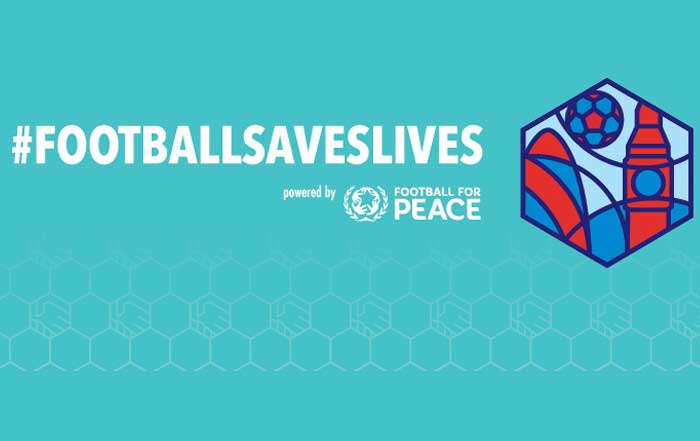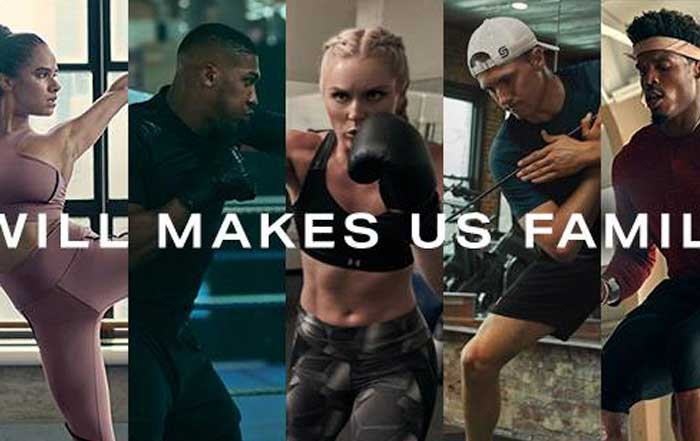Athletic performance has always been closely tied to nutrition. From the early days when athletes followed traditional diets shaped by cultural practices, to the modern era where scientific advancements dictate meal timing, macronutrient distribution, and supplementation, diet remains a cornerstone of sports success. So today the conversation surrounding diet is even more nuanced, with new research, shifting cultural preferences, technological integration, and global trends influencing how athletes fuel their bodies. For sportsyncr.com, which focuses on the intersection of sports, health, fitness, culture, and business, exploring these diet trends is crucial to understanding the evolving strategies behind peak performance.
As athletes adapt to the fast-changing demands of modern competition—ranging from extreme endurance events to fast-paced team sports and esports—their diets must reflect not only the need for energy and recovery but also long-term health, sustainability, and personalization. This article provides an in-depth analysis of the dietary trends impacting athlete performance today, drawing insights from science, real-world applications, and the broader socio-economic and environmental forces at play.
The Rise of Personalized Nutrition
In recent years, one of the most significant developments has been the shift toward personalized nutrition. Advances in genetic testing, gut microbiome analysis, and wearable technology have made it possible to tailor diets with unprecedented precision. Companies such as DNAfit and InsideTracker now offer genetic and biomarker-driven meal recommendations, allowing athletes to optimize macronutrient intake, hydration levels, and recovery protocols based on individual needs.
This shift is further supported by the integration of AI-powered dietary platforms that track energy expenditure and recommend meal adjustments in real time. Personalized nutrition is not simply about enhancing performance during competition; it also focuses on reducing injury risk, managing inflammation, and extending career longevity. By aligning diet strategies with personal biology, athletes can make informed choices that maximize performance efficiency.
Learn more about advancements in sports technology and how data-driven nutrition plays a vital role in the modern sporting world.
Plant-Based Diets and Performance
Plant-based nutrition has moved beyond being a niche lifestyle choice and has entered mainstream sports. Influenced by documentaries, endorsements from top athletes, and growing awareness of sustainability, many athletes are adopting vegetarian or vegan diets. Venus Williams, Lewis Hamilton, and Novak Djokovic are among the high-profile names who have embraced plant-based eating, citing improved energy levels, quicker recovery times, and reduced inflammation.
Scientific research supports these claims, showing that diets rich in fruits, vegetables, legumes, nuts, and seeds can provide sufficient protein, micronutrients, and antioxidants critical for athletic performance. However, challenges remain, particularly around ensuring adequate intake of vitamin B12, iron, and omega-3 fatty acids. Innovations in fortified foods, plant-based protein powders, and algae-based omega supplements are helping athletes close these nutritional gaps.
Global interest in sustainable food practices further amplifies the appeal of plant-based sports diets, linking performance benefits with environmental responsibility.
High-Protein Diets and Muscle Adaptation
Protein remains a central focus in athletic diets, especially for sports requiring strength and hypertrophy. The traditional emphasis on animal protein is now being supplemented by high-quality plant proteins such as pea, hemp, and soy, which have gained acceptance due to their complete amino acid profiles and digestibility. Athletes across disciplines increasingly rely on protein timing strategies—such as consuming 20–40 grams of protein post-workout—to maximize muscle protein synthesis.
Scientific consensus highlights that the total daily protein requirement is more important than the exact timing, yet practices like protein pacing (spreading intake throughout the day) have shown strong results for recovery and adaptation. The commercialization of high-protein functional foods—ranging from bars and shakes to yogurt alternatives—is driving consumer accessibility, while elite sports nutritionists integrate these foods into regimented meal plans.
For readers interested in deeper coverage on sports training and its link to diet, visit sports performance insights.
Low-Carb and Ketogenic Approaches
Low-carbohydrate and ketogenic diets continue to generate debate within athletic circles. Endurance athletes, in particular, have experimented with these approaches to increase fat oxidation and improve metabolic flexibility. While traditional carb-loading strategies remain dominant in marathons and triathlons, ketogenic methods are gaining traction in ultra-endurance sports where sustained energy without frequent refueling is advantageous.
The benefits of ketogenic approaches include enhanced fat utilization, improved mental clarity, and stable energy levels. However, critics highlight potential downsides, including reduced anaerobic capacity, difficulty maintaining muscle glycogen stores, and impaired performance in high-intensity sports. The key trend in 2025 is not strict adherence to keto but rather periodized carbohydrate strategies, where athletes strategically alternate between high- and low-carb phases to balance training adaptation and performance readiness.
Hydration and Electrolyte Management
Hydration has long been recognized as essential for performance, but the science of fluid and electrolyte balance has advanced considerably. Modern athletes no longer rely solely on water or generic sports drinks. Instead, individualized hydration strategies are now built on sweat testing, which measures sodium loss rates to determine optimal electrolyte replacement.
Companies such as Precision Hydration and Gatorade’s Gx platform provide customizable solutions that match athletes’ unique needs. In hot and humid climates, such as in Australia or Southeast Asia, hydration strategies become even more critical, as dehydration can impair both physical output and cognitive decision-making. The growing market of functional hydration products includes not only electrolyte beverages but also effervescent tablets, chewable salt capsules, and recovery-based fluids enriched with amino acids and vitamins.
For more insights into the intersection of health and athletic performance, hydration remains a central theme in contemporary sports science.
Gut Health and Probiotic Supplementation
The role of gut health in athletic performance is one of the most exciting areas of current sports nutrition. Athletes are now paying greater attention to the gut microbiome, recognizing its influence on immune function, nutrient absorption, inflammation, and even mood regulation. Probiotics and prebiotics are increasingly included in athlete diets to maintain gastrointestinal balance, particularly under the stress of high training loads.
Research from organizations like the American College of Sports Medicine (ACSM) indicates that probiotic supplementation can reduce the risk of respiratory infections in endurance athletes and enhance nutrient utilization. Fermented foods such as kefir, kimchi, sauerkraut, and miso are also gaining popularity as natural sources of probiotics. As athletes continue to travel internationally for competitions, maintaining gut stability has become a strategic advantage.
Athlete Nutrition Calculator
Step 1: Basic Information
Supplements as Performance Enhancers
Supplements remain one of the most heavily debated aspects of sports nutrition, and their role in athlete performance has only grown in importance in 2025. While whole foods are widely recognized as the foundation of a healthy diet, supplements provide athletes with a convenient, targeted means of enhancing recovery, addressing nutritional gaps, and supporting specific physiological functions. From creatine to omega-3 fatty acids, the range of supplements used by athletes today reflects the diversity of sporting demands.
Creatine continues to hold its place as the most researched and widely accepted supplement for strength and power athletes. By enhancing phosphocreatine stores, it enables greater output during short bursts of high-intensity activity. Similarly, caffeine remains a cornerstone of performance nutrition due to its ability to increase alertness, delay fatigue, and improve endurance. Beyond these staples, newer supplements such as beta-alanine, tart cherry extract, and adaptogens like ashwagandha have gained popularity for their roles in reducing muscle soreness, enhancing recovery, and improving stress resilience.
Importantly, governing bodies such as the World Anti-Doping Agency (WADA) continue to monitor supplements to ensure compliance with anti-doping regulations. Athletes must navigate this landscape carefully, relying on third-party tested products from trusted brands to ensure both effectiveness and safety.
For more about evolving developments in sports nutrition and innovation, visit sports business insights.
Sustainability and Eco-Conscious Nutrition
Athletes today are increasingly aware that their dietary choices extend beyond personal performance to the global environmental impact. Sustainability has become a core concern, not just in sports venues and events, but also in the food choices athletes make. The rising popularity of regenerative agriculture, carbon-neutral protein powders, and locally sourced produce highlights this shift toward eco-conscious nutrition.
Global organizations such as the Food and Agriculture Organization (FAO) emphasize the importance of diets that balance human health and environmental sustainability. For athletes, this translates into choosing foods that minimize carbon footprints while maximizing nutrient density. Companies like Huel and Soylent have introduced environmentally sustainable meal replacement products, while partnerships between sports teams and eco-friendly food suppliers are now commonplace. This trend also reflects consumer expectations, as fans increasingly want athletes and brands to champion sustainable practices.
Explore how the sports industry intersects with environmental responsibility on sportsyncr environment coverage.
Intermittent Fasting and Time-Restricted Eating
Intermittent fasting (IF) has moved from general wellness trends into athletic performance circles, where it is being studied for its potential to improve metabolic flexibility, reduce inflammation, and promote efficient energy utilization. For endurance athletes, time-restricted eating can align with training cycles, encouraging the body to rely more on fat stores during low-intensity sessions.
However, the application of fasting in sports must be carefully managed. While some athletes report improved focus and leanness, others face challenges such as reduced training intensity, slower recovery, and hormonal imbalances when fasting is not adapted to their individual needs. The 2025 consensus in sports nutrition emphasizes strategic fasting protocols, where fasting periods are tailored around training loads rather than rigid schedules.
Elite teams now employ dietitians who help athletes balance fasting windows with carbohydrate timing, ensuring glycogen replenishment before high-intensity sessions. This balance of tradition and innovation reflects how IF is being reshaped into a performance tool rather than a one-size-fits-all diet.
Cultural Influences on Athlete Diets
Athlete diets are also shaped by cultural and regional practices, which continue to play a major role in fueling performance. From the Mediterranean diet in Italy and Spain, known for its emphasis on olive oil, fresh vegetables, and lean protein, to the traditional rice and fish diets in Japan, athletes often draw inspiration from their local cuisines while competing on the global stage.
Cultural traditions also influence how athletes view food rituals. For instance, Nordic countries emphasize high-quality dairy and root vegetables, which are seen as both performance-enhancing and environmentally sustainable. In contrast, countries like Brazil and Argentina, where red meat is central to the diet, have influenced endurance athletes to incorporate high-protein, iron-rich meals into their training regimens. These cultural dietary practices not only highlight the diversity of global nutrition but also remind us that performance is deeply tied to heritage and lifestyle.
Readers can learn more about global perspectives on sports and traditions in sportsyncr culture insights.
The Business of Sports Nutrition
Sports nutrition is no longer confined to the locker room or training center; it has become a massive global industry. Valued at over $40 billion globally, the sports nutrition market is fueled by consumer demand, endorsements from elite athletes, and the integration of functional foods into mainstream diets. Companies like Gatorade, Red Bull, and Clif Bar dominate in their respective niches, while emerging startups focus on niche areas such as collagen supplements for joint health or mushroom-based powders for cognitive performance.
Endorsement deals are a powerful driver of market growth, as athletes increasingly align themselves with brands that reflect their personal values, whether related to performance, sustainability, or wellness. Fans look to athletes as role models, and this influence translates into purchasing behaviors, making nutrition a critical branding and marketing opportunity. The convergence of health, performance, and commerce has transformed sports nutrition into one of the most dynamic business frontiers in global sports.
Stay updated on the commercial side of sports through sportsyncr news coverage.
Technology’s Role in Nutrition Monitoring
The digital era has transformed how athletes monitor and adjust their diets. Wearables, smart scales, and continuous glucose monitors are now integrated into training regimens, providing real-time feedback on energy levels, hydration, and nutrient absorption. Companies like WHOOP, Garmin, and Abbott’s Libre Sense have revolutionized bio-tracking, giving athletes and coaches access to precise data that informs daily dietary decisions.
Nutrition-focused apps have evolved to incorporate AI-driven recommendations, meal tracking, and even predictive analytics that anticipate performance outcomes based on current dietary patterns. These tools allow athletes to experiment with food strategies during training and refine them before competitions, reducing uncertainty and improving confidence on game day.
Learn more about how technology in sports is shaping not only athlete monitoring but also the science of nutrition optimization.
Psychological Dimensions of Diet
While the physiological aspects of diet receive much attention, the psychological role of nutrition is equally important. Athletes must navigate not only the physical demands of fueling but also the mental discipline required to adhere to strict dietary plans. The concept of “food as mindset” has emerged, emphasizing the connection between dietary routines and confidence, focus, and resilience.
Sports psychologists now work alongside nutritionists to ensure that diets are not only effective but also sustainable from a behavioral perspective. The growing prevalence of eating disorders in competitive sports underscores the importance of balanced, athlete-centered approaches. A diet that supports mental health is increasingly recognized as just as vital as one that optimizes physical performance.
For more discussion about how health, psychology, and lifestyle converge in sports, visit sportsyncr health section.
Future Innovations in Athlete Diets
The future of athlete nutrition is being shaped by rapid scientific advances, biotech innovation, and shifting consumer expectations. In 2025, several groundbreaking developments are already reshaping how athletes approach diet. Among the most notable is the use of lab-grown proteins, which provide a sustainable alternative to traditional meat sources without compromising amino acid profiles essential for performance. Cultivated chicken and beef products, once experimental, are now finding their way into professional sports teams’ dining programs as organizations emphasize both performance and environmental stewardship.
Another frontier is the application of nutrigenomics, where genetic markers are used to predict responses to specific foods and nutrients. Athletes can now access data that explains how their genes influence metabolism, recovery, and injury susceptibility, enabling precision-driven diets that are both preventive and performance-oriented. Similarly, advancements in functional foods—such as bioengineered rice enhanced with electrolytes or beverages infused with adaptogens—are being designed specifically for sports recovery. This convergence of food science and performance illustrates how innovation is not limited to equipment and technology but extends deeply into nutrition strategies.
For readers interested in broader innovation across the sports sector, explore sportsyncr science coverage.
Globalization of Sports Nutrition
The globalization of sport has inevitably influenced the globalization of nutrition. Athletes today compete in diverse environments, requiring access to foods that may not be native to their home countries. As global competitions expand, from the Olympic Games to international esports tournaments, the demand for cross-cultural nutrition strategies has intensified. This has led to the emergence of global sports nutrition hubs, particularly in cities such as London, Los Angeles, and Singapore, where athletes can access international cuisines adapted to performance requirements.
Globalization has also increased the availability of superfoods once restricted to specific regions. Ingredients such as quinoa from South America, moringa from Africa, and turmeric from South Asia are now staples in performance diets worldwide. At the same time, supply chain vulnerabilities highlighted during the COVID-19 pandemic have underscored the need for resilience in sourcing. Teams and organizations now invest in logistics strategies to ensure athletes maintain dietary consistency no matter where they compete.
Learn more about how sports nutrition connects with global culture in sportsyncr world coverage.
Careers in Sports Nutrition
As athlete diets have become more specialized, the professional landscape of sports nutrition has expanded dramatically. The demand for sports dietitians, performance chefs, and nutrition technologists has grown in both elite and grassroots levels of sport. Universities and professional sports organizations now employ full-time nutrition staff to develop customized meal plans, manage supplementation, and monitor dietary compliance through technology.
In addition, careers in sports nutrition now extend into product development, where professionals collaborate with food scientists and biotech firms to design new supplements and functional foods. Marketing and brand partnerships also create opportunities for nutrition experts, as companies rely on credible voices to build consumer trust. For young professionals, certifications from organizations such as the International Society of Sports Nutrition (ISSN) have become a pathway into this rapidly growing field. The industry’s expansion underscores how diet is no longer a peripheral element of sports but a central career avenue with global relevance.
For readers exploring opportunities, see sportsyncr jobs section.
The Role of Major Brands in Shaping Diet Trends
The influence of major global brands on athlete diets cannot be underestimated. Companies like Nike and Adidas, while traditionally associated with apparel, have begun investing in nutrition research and partnerships, linking holistic performance with their products. Meanwhile, dedicated nutrition companies such as Nestlé Health Science, Herbalife Nutrition, and Optimum Nutrition continue to set industry standards through large-scale R&D investments and global distribution.
Sponsorship deals amplify these connections, as athletes frequently become the face of new dietary products. Endorsements not only build trust among consumers but also drive mainstream adoption of specialized performance foods. The rise of social media platforms such as Instagram and TikTok has further accelerated this trend, making athlete diets highly visible to global audiences. The intersection of performance, marketing, and brand identity reinforces how nutrition is both a personal and commercial narrative.
Readers can discover more about branding in sports through sportsyncr brands section.
Cultural Shifts in Public Perception
Athlete diets are not only shaping performance but also influencing public health trends. In many countries, fans replicate the dietary habits of their favorite athletes, creating ripple effects that extend far beyond stadiums and arenas. For example, the surge in plant-based protein consumption is partly driven by endorsements from high-profile athletes who champion vegan lifestyles. Similarly, the popularity of hydration products like electrolyte tablets has spread from elite athletes to recreational fitness enthusiasts worldwide.
This cultural spillover highlights the power of athletes as role models, making dietary practices part of the broader social dialogue around health and fitness. Media coverage and documentaries continue to amplify these shifts, connecting performance nutrition with everyday wellness. The cultural dimension of diet reinforces the idea that what athletes eat today not only impacts their careers but also shapes societal attitudes toward health.
To explore more about cultural intersections in sports, visit sportsyncr culture insights.
Environmental and Ethical Considerations
As the sports world grapples with its environmental footprint, diet has emerged as a focal point for ethical considerations. Athletes are increasingly expected to act as ambassadors of sustainability, choosing diets that align with global goals of reducing emissions and preserving biodiversity. The growth of alternative proteins, such as insect-based powders and mycoproteins, reflects efforts to balance performance with planetary health.
Athletes also face ethical decisions regarding food sourcing, particularly around fair trade practices and local economic impacts. Partnerships with ethical food brands are now seen as both performance-oriented and socially responsible, influencing public perception of athletes and teams. In this way, diet has become part of the broader environmental and social governance (ESG) conversation in sports, highlighting the responsibility of athletes not only to themselves but also to their communities and the planet.
Readers can dive deeper into sustainability and ethics in sport at sportsyncr environment section.
Media and Technology in Shaping Dietary Awareness
The integration of digital platforms has also transformed how information about athlete diets is communicated. Streaming services and sports networks frequently feature behind-the-scenes content on training camps, where diet is showcased as part of an athlete’s daily routine. Social media influencers and nutrition coaches with large followings now play a central role in shaping dietary awareness, sometimes rivaling traditional experts.
Technology also allows teams to share real-time insights with fans, such as the number of calories an athlete consumes before a major game or the hydration strategies employed during tournaments. This transparency not only humanizes athletes but also bridges the gap between elite sports and general fitness audiences. By making diet part of the spectacle, media ensures that nutrition remains a visible and influential aspect of global sports culture.
Regional Perspectives on Athlete Diets
Athlete diets are never uniform across the globe. They are shaped by geography, cultural heritage, economic conditions, and the availability of resources. In 2025, regional perspectives remain critical in understanding how athletes fuel performance and how global diet trends are adapted locally.
In the United States, sports nutrition is highly commercialized, with athletes having access to state-of-the-art performance centers, dedicated dietitians, and a vast range of supplements and functional foods. American athletes often combine traditional high-protein, high-carbohydrate regimens with advanced supplements, reflecting the influence of both science and consumer-driven product development. Meanwhile, in the United Kingdom, where football dominates, athletes lean heavily on tailored meal plans emphasizing balance, hydration, and cultural traditions such as whole grains, fish, and locally sourced produce.
In Germany and other parts of Europe, precision-driven nutrition is intertwined with research-intensive programs supported by national sports institutes. Athletes often integrate regenerative farming practices and sustainable food sources into their diets, reflecting Europe’s leadership in environmental responsibility. In contrast, China has rapidly invested in sports nutrition, blending ancient practices such as herbal medicine with modern dietary science, highlighting a unique fusion of tradition and innovation.
Countries like Australia and New Zealand focus on performance nutrition that balances endurance with outdoor lifestyles, emphasizing fresh produce, lean meats, and hydration tailored to hot climates. In Japan, rice, seafood, and fermented foods continue to form the backbone of athletic diets, with growing integration of Western supplements. Across Africa and South America, athletes often adapt local staples such as maize, cassava, beans, and plantains into high-performance meal plans, demonstrating that regional diets can be as effective as globalized strategies when structured with scientific insight.
For readers interested in regional dynamics of performance and culture, visit sportsyncr world insights.
Case Studies: Diet in Action
To fully understand the impact of diet on athlete performance, examining case studies provides valuable real-world insights.
One compelling case involves elite marathon runners from Kenya and Ethiopia, who rely heavily on simple diets centered around ugali (a maize-based porridge), legumes, and vegetables. Despite their seemingly modest diets, these athletes dominate global distance running. Their success underscores the importance of meal consistency, nutrient density, and cultural alignment over expensive or complex regimens.
In contrast, professional basketball players in the NBA often work with full-time performance chefs who design individualized menus, taking into account rigorous travel schedules and back-to-back games. Meals are meticulously prepared to manage glycogen replenishment, hydration, and recovery. This demonstrates how elite athletes in commercial sports must integrate precision nutrition with the practicalities of a demanding competition calendar.
Another example comes from rugby in New Zealand, where players combine high-calorie diets with protein pacing strategies to support both strength and endurance. The integration of traditional Maori foods such as kumara (sweet potato) alongside modern sports supplements highlights the blending of culture and science.
Finally, in eSports, diet has emerged as a crucial factor in cognitive endurance. Competitive gamers focus on hydration, controlled caffeine intake, omega-3 supplementation, and blood sugar management to sustain focus during long sessions. This demonstrates that diet impacts not only physical performance but also mental acuity, making it relevant across all sporting disciplines.
For readers seeking a broader lens on performance across sports categories, explore sportsyncr sports section.
Lessons for Business, Culture, and Society
Athlete diets have far-reaching implications that go beyond the playing field. For businesses, the expansion of the sports nutrition market represents billions of dollars in opportunity, from supplements and functional foods to technology-driven monitoring tools. Brands are expected not only to deliver scientifically proven results but also to align with consumer values such as sustainability, transparency, and ethical sourcing.
Culturally, the influence of athlete diets shapes public behaviors. Fans replicate dietary habits, fueling industries ranging from plant-based protein to electrolyte products. This cultural transfer demonstrates how elite sports impact everyday health choices, making athlete diets a form of soft power that shapes societal norms around wellness.
Societally, diet also intersects with issues of accessibility and equity. While elite athletes enjoy access to cutting-edge nutrition, grassroots players in less affluent regions may lack even basic dietary support. Bridging this gap is increasingly recognized as a responsibility for sports organizations, governments, and global non-profits. Programs that promote affordable, nutrient-rich diets for young athletes are becoming essential for long-term development and equality in sport.
For readers who want to follow this intersection of sports, culture, and society, visit sportsyncr social insights.
The Future Outlook of Athlete Diets
Looking forward, athlete diets will continue to evolve in response to scientific discovery, cultural change, and environmental necessity. Artificial intelligence, biotechnology, and genomics will further personalize nutrition, while global movements toward sustainability will reshape how food is sourced and consumed. Athletes will increasingly act as ambassadors for responsible eating, promoting not only personal performance but also broader environmental and social goals.
At the same time, challenges will persist. Balancing performance optimization with mental health, managing misinformation around supplements, and ensuring equitable access to nutrition resources will remain key issues. Sports organizations and governing bodies will need to collaborate with scientists, brands, and policymakers to ensure that nutrition continues to advance in a way that benefits athletes and society alike.
Learn more about these intersections of innovation and sustainability in sportsyncr environment and sportsyncr business coverage.
Happy Tummy Summary :)
Diet remains one of the most dynamic and influential aspects of athlete performance. The trends shaping nutrition today—from personalized plans and plant-based diets to sustainability and technological monitoring—reflect a holistic approach that integrates science, culture, and commerce. Athletes no longer follow static regimens but embrace adaptive strategies tailored to their individual biology, cultural identity, and the broader values of society.
What emerges is a powerful narrative: diet is not merely fuel, but a lens through which performance, health, business, and culture converge. For elite athletes, diet determines the margins between victory and defeat. For fans and communities, it shapes how health and sustainability are understood in daily life. For businesses, it represents a rapidly growing industry where credibility, innovation, and ethics are paramount.
As the global sporting world continues to expand, athlete diets will remain at the heart of performance, shaping not only how games are won but how society views wellness, sustainability, and the future of human potential. On sportsyncr.com, where sport, health, culture, business, and technology intersect, following these dietary trends is essential to understanding not just where athletes are today, but where the future of sports is headed tomorrow.








